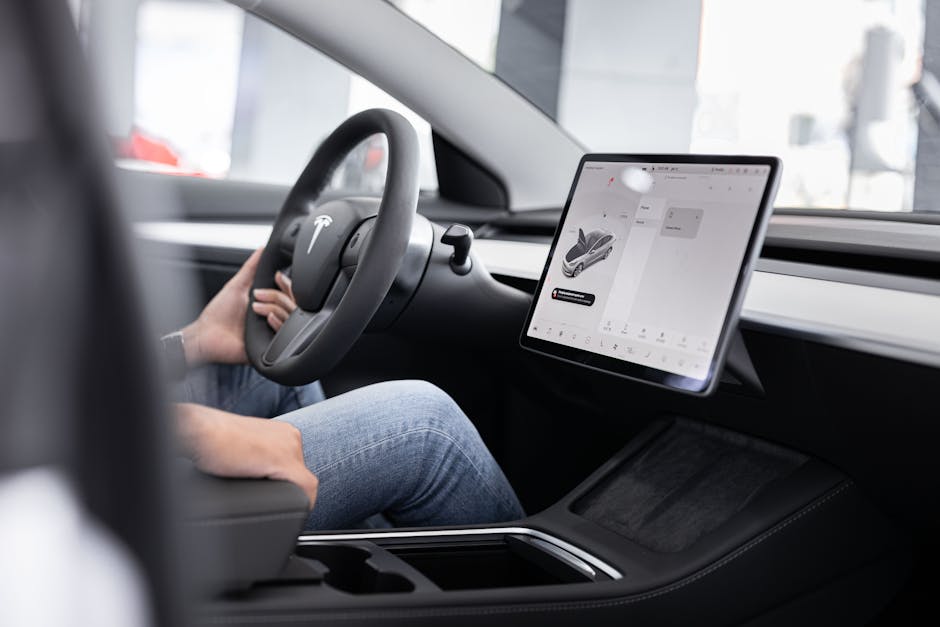Electrifying Green Spaces: How EVs Boost Urban Biodiversity
Urban landscapes are evolving, and at the heart of this transformation lies an unlikely hero: electric vehicles (EVs). With their silent hum and zero emissions, EVs are not merely a sustainable alternative to traditional gas-powered cars; they are catalysts for fostering urban biodiversity and enhancing green initiatives. In this article, we will delve into how EVs can impact urban ecosystems, promote greener spaces, and contribute positively to our cities' overall health.
As cities grow, the challenge of balancing industrialization and environmental conservation becomes more pressing. Integrating EVs into urban infrastructure offers an innovative approach to alleviating some of these challenges. Let's explore the essential ways in which EVs are electrifying our green spaces and redefining urban biodiversity.
The Connection Between EVs and Urban Biodiversity
Urban areas, often viewed as concrete jungles, can support various plant and animal species. The introduction of EVs enables a less intrusive means of transporting goods and people, significantly reducing urban noise and air pollution. This reduction allows wildlife to navigate city environments more effectively, increasing biodiversity.
Lowering Noise Pollution
Communities have long struggled with rising noise pollution due to traffic; this is particularly evident in bustling urban environments. The inherently quieter operation of EVs means less disturbance to local wildlife, allowing them to flourish. A recent study highlighted in Harvard Business Review showed that lower noise levels positively impact species like songbirds, which rely on sound for communication and breeding. The benefits of quieter streets extend beyond wildlife; they foster better mental well-being for residents, ultimately leading to healthier urban ecosystems.
Improved Air Quality
One of the foremost advantages of EVs is their lack of tailpipe emissions. By reducing the number of gas-powered vehicles on the road, we can lower the levels of harmful pollutants in urban air. Clean air doesn’t just benefit humans; it also promotes healthier plant life, which is vital for supporting various animal species. A study conducted by the World Health Organization emphasizes that improving urban air quality can significantly enhance the well-being of local ecosystems.
Enhancing Urban Green Initiatives
Electric vehicles serve as a backbone for various green initiatives aimed at enhancing urban living. Here’s how these vehicles can be integrated into broader environmental strategies:
The Rise of Sustainable Transportation Solutions
Many city planners are recognizing the importance of sustainable transportation. Electric vehicles are a key component of this shift, encouraging communities to consider alternatives to personal car ownership. Shared EV programs or electric public transit systems can facilitate a greater flow of people while minimizing the carbon footprint—reducing urban congestion in the process.
Urban Green Spaces and EV Charging Stations
Integrating EV charging stations within parks and green spaces can create a dual benefit: it supports the convenience of EV drivers while promoting access to nature. Imagine strolling through a park, with trees swaying and flowers blooming, while charging your vehicle at a nearby station. The accessibility of green spaces becomes an enticing draw for eco-conscious commuters, fostering community engagement with nature.
Community Engagement and Education
Electric vehicles can serve as an inspiring tool for community education around sustainability and biodiversity. By hosting events that focus on EVs and their role in promoting cleaner cities, organizations can engage locals in discussions about green practices. Workshops centered on EV technology can demystify the vehicles and empower individuals to adopt greener lifestyles.
The Role of Policy in Advancing EV Integration
For urban biodiversity improvements through EV usage to gain momentum, supportive policies must be implemented. Here are some crucial measures cities can take:
Incentives for EV Adoption
Financial incentives can substantially encourage EV adoption among residents. Programs offering tax rebates, lower registration fees, and grants for EV purchases can motivate individuals to switch from fossil fuel-powered vehicles. Additionally, these incentives can encourage businesses to invest in electric fleets, further contributing to the reduction of emissions in urban areas.
Tax Breaks for Green Spaces

Urban planners could advocate for tax breaks linked to the development of green spaces that incorporate EV infrastructure. By supporting businesses and developers who prioritize parks, gardens, and eco-friendly amenities, cities can promote a symbiotic relationship between urban biodiversity and electric transportation.
The Future of EVs and Urban Biodiversity

As we look forward, the challenge is not just to maintain the progress already made but to enhance it. The evolving landscape of electric vehicles and their integration into urban ecosystems presents a fascinating horizon.
Innovations Enhancing EV Experience

New technologies are paving the way for even more dynamic roles for EVs in our cities. For instance, sharing platforms, detailed public charging maps, and apps that showcase local wildlife sanctuaries accessible via EV routes can enrich the user experience. Additionally, biophilic designs in EV interiors can promote a cohabitation experience with nature, enhancing users' relationship with their environment.
Collaboration Between Stakeholders

Cross-sector collaboration will be pivotal for the future of urban biodiversity. By bringing together city planners, environmentalists, and automotive manufacturers, we can create integrated strategies that appeal to a wider user base. Electric vehicle manufacturers are incorporating feedback from urban wildlife studies to inform better design choices for their vehicles, thus optimizing their role in urban biodiversity.
Final Thoughts on EVs and Urban Biodiversity
The journey toward electrified green spaces is a multifaceted one. As urban areas continue to expand, the integration of electric vehicles provides a compelling vision for a sustainable coexistence between technology and nature. EVs not only clean our air and reduce noise pollution but also create opportunities for enhancing urban green initiatives.
By adopting supportive policies, promoting community engagement, and embracing innovative solutions, we can cultivate environments where both humans and wildlife thrive. Electric vehicles hold the potential to transform urban living, making our cities greener, healthier, and more biodiverse. The electrifying journey of EVs champions a future where people, planet, and sustainable practices work in harmony.
For a deeper understanding of how technology and sustainability intersect, consider checking out our discussions on how green roads influence urban development and biodiversity, or how community efforts are vital in promoting EV adoption. Your next ride might just be the spark that ignites a transformation in urban spaces everywhere.












